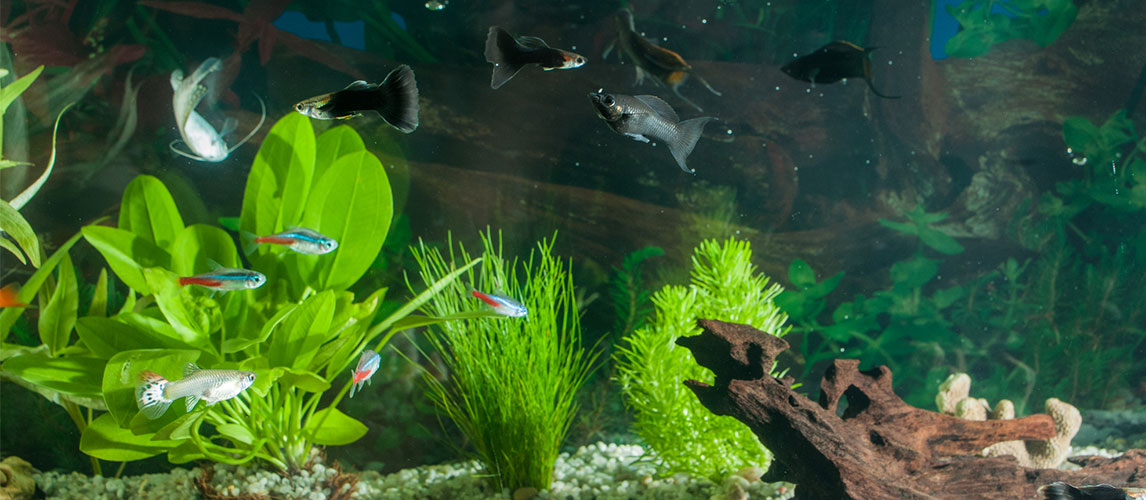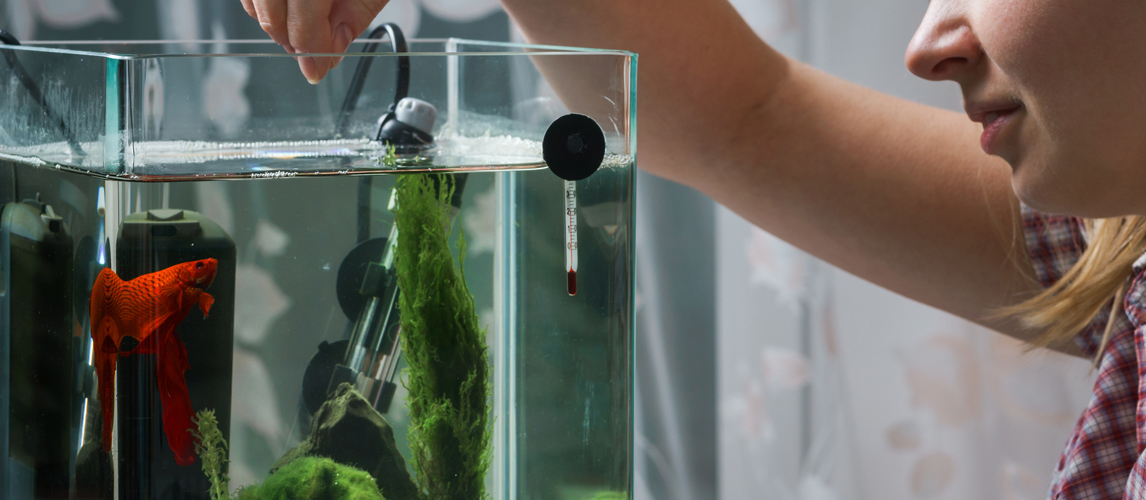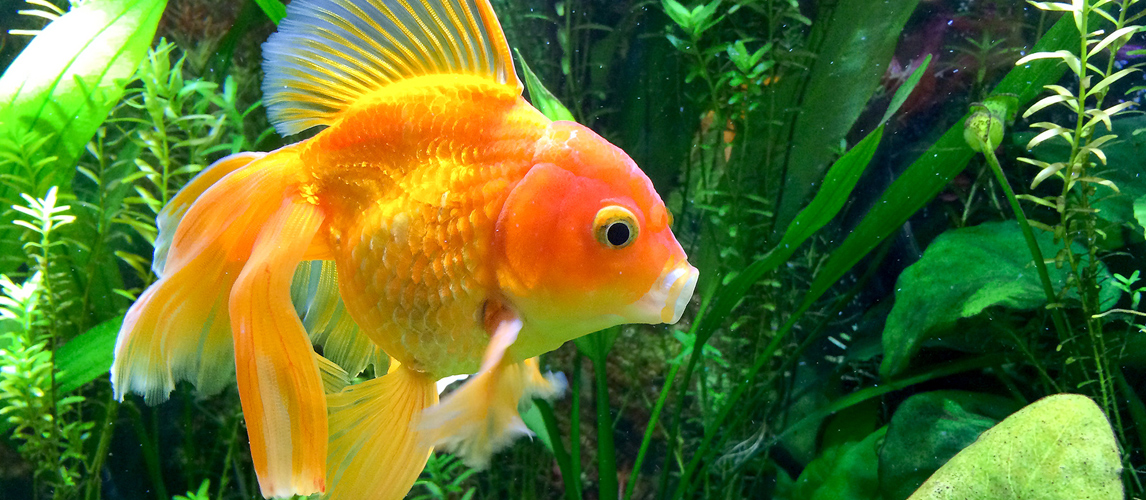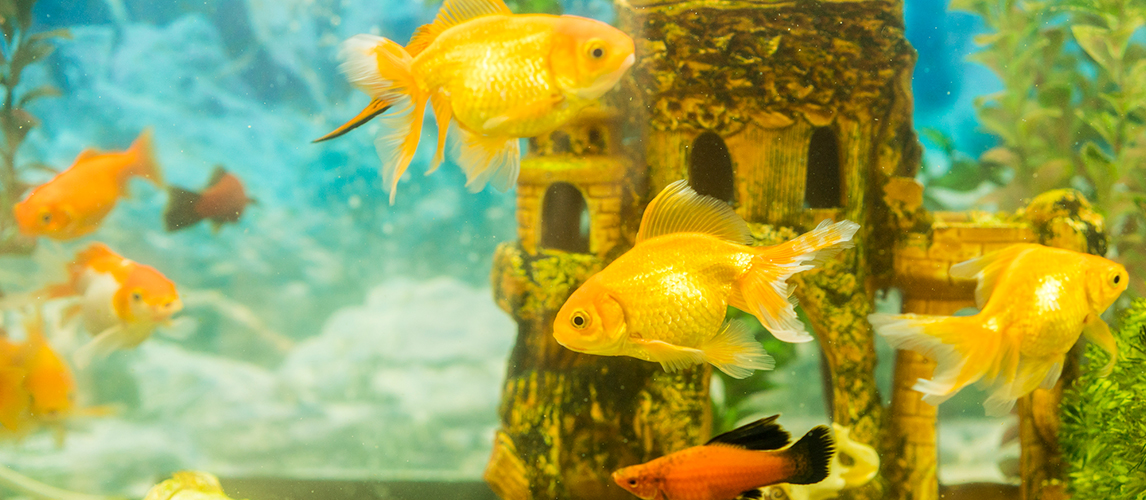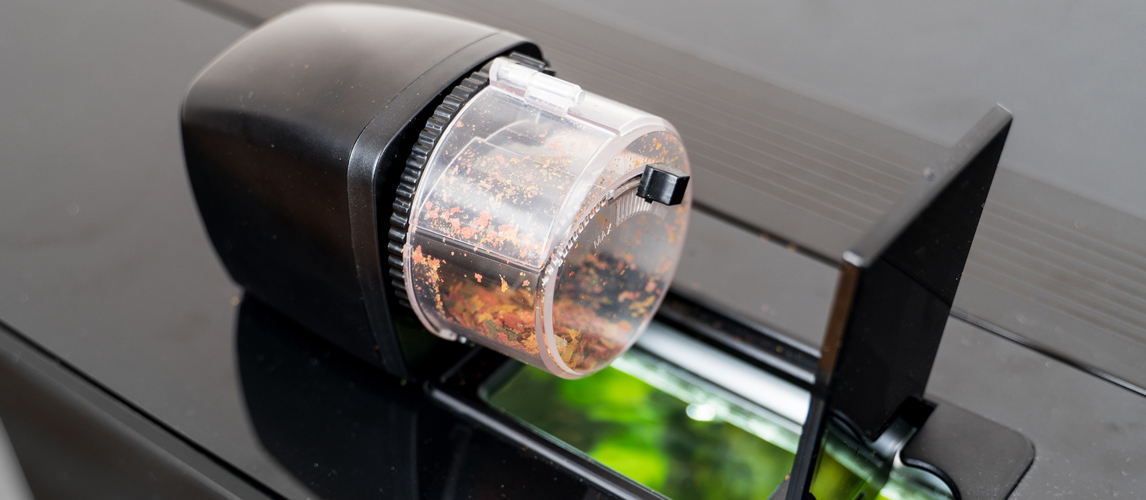
The Best Aquarium Substrate in 2022
- Home
- Other animals
- Fish
To provide a beautiful home for your beautiful fish, a good-quality substrate is a must-have. Without it, you won’t be able to grow lush aquatic plants and your aquarium will look plain and poor; not to mention, your fish will be very unhappy!
But things are not as simple as just picking up any old substrate for your tank. Before you start shopping, consider which type of aquarium plants you want to keep as this will dictate which type of substrate you need. Speaking of types, there is a huge variety of substrates available for purchase; from pebbles and gravel to sand and soil, there are many options to choose from for your planted aquarium. To simplify the selection process for you and help you pick out the best aquarium substrate for your tank, we reviewed 10 different products, detailing their key features down below. We also prepared a handy little buying guide, so read on!
The Best Aquarium Substrate
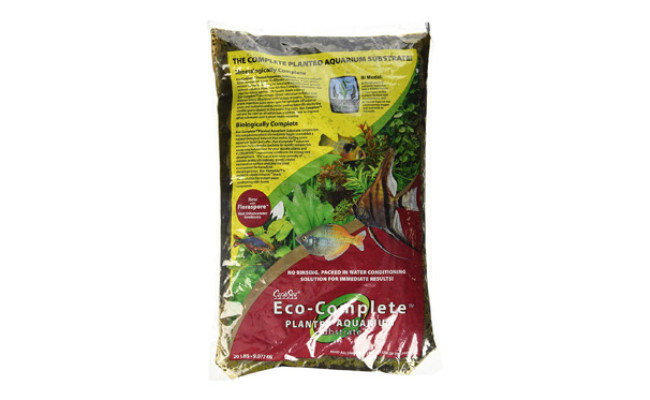
CaribSea have been making various products to enhance closed systems like aquariums for almost 50 years. The brand has gained high reliability from customers in this time period which is evident from the popularity of this particular substrate.
Made from volcanic soil that is rich in various nutrients, including magnesium, calcium, iron and many trace elements, this substrate will nourish your aquarium plants by keeping their roots nice and strong. You might have seen how big and beautiful the vegetative bodies of Hawaii, Costa Rica and Bali grow? Well, the rich chemical composition of that same soil resulting from the basaltic volcano is the main component here, so you can expect your planted aquarium to look as lush as can be!
The highly porous spherical grains included here will ensure the right level of diffusion. On the other hand, its live heterotrophic bacteria will transform the fish waste faster into nutritious natural food for the plants. Best of all? The substrate is packed in a water conditioning solution so you can use it straight out of the bag.
Rich in iron and other minerals and trace elements
Highly porous spherical grains
Contains heterotrophic bacteria
For freshwater plants
Deep black color, with zero artificial dyes
- Brand: Carib Sea
- Model: 770
- Weight: 20 lbs
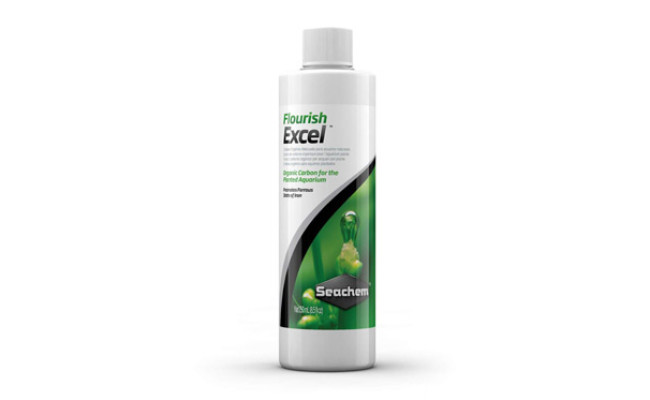
Owned and operated by “hobbyists”, Seachem have remained one of the most admirable pet care companies with a unique vision. They continue their roots of sound science by bringing the fruits of knowledge derived from their chemists and biologists in every product!
Their Flourish line also comes from those scientific origins. Bioavailable carbon for planted aquariums, Excel offers a rich mixture of nutrients including microelements and trace elements. These contain iron, calcium, and magnesium among other substances which are highly beneficial to plant growth.
You can use it confidently on the invertebrate inhabitants of aquarium like shrimp. The combination of all elements is carried out carefully here preventing any kind of overdose for those precious lives. It, in fact, reduces iron promoting its ferrous state instead of ferric, which can be more efficiently used by plants. Most importantly, Flourish Excel functions as the source of simpler organic carbon which is readily available.
Bioavailable organic carbon
Encourages ferrous iron
No phosphate or nitrate
Balanced mixture
- Brand: Seachem
- Model: 67104530
- Weight: 1 lb
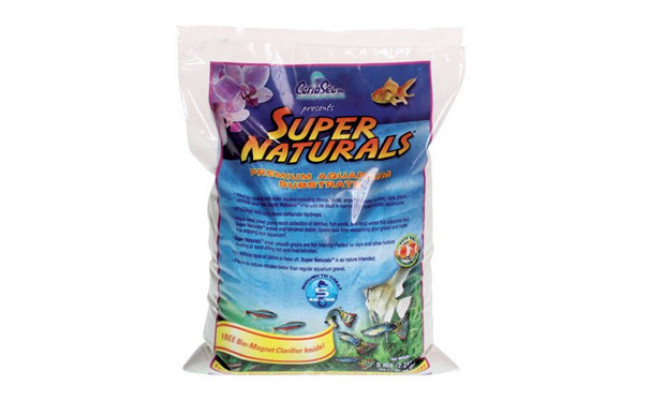
Another great substrate for planted aquariums is the Super Naturals Moonlight Sand. Although it is mainly meant for freshwater systems, it can also be used in saltwater aquariums since the pH is completely neutral.
The beautiful white color of this fish tank sand adds a stunning contrast to the whole aura in the closed glass tank. The sand also carries some shine making the enclosed aquatic world sparkle every now and then, making its name – Super Naturals Moonlight – quite apt!
Its smooth grains are safe for the marine creatures with a soft belly. Also, being free of any artificial dyes and paints, this is one of the safest substrates you can get for your valuable collection of aquatic pets. It is available in five pounds, but you can settle for more than one pack if you want a deeper layer in the aquarium.
Sparkly white color
pH neutral
Both saltwater and freshwater
Soft-belly safe
Free of dyes and paints
- Brand: Carib Sea
- Model: 008479058201
- Weight: 1 lb
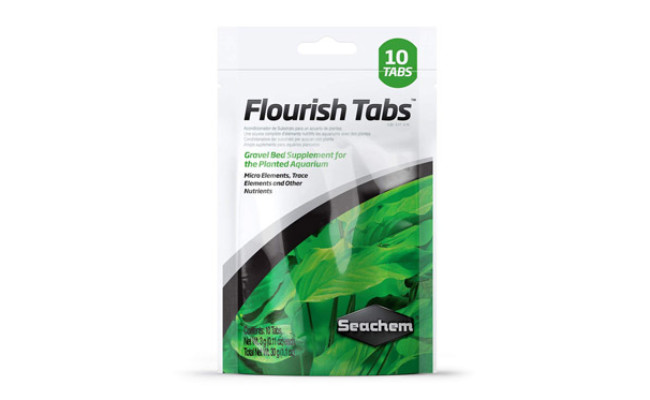
The Seachem Flourish line also offers their rich mixture in tablet forms. One pack of these contains 10 tablets in total. One of these tablets inserted into the aquarium gravel bed will accelerate healthy growth for its plants. Each pack can treat a plant bed twice if it is about 12 by 30 inches in size. Since they are inserted directly into the bed, plants benefit from the fertilization faster, through their roots on tabs.
Every tablet is packed with a balanced combination of trace elements, vitamins, and amino acids. Among the trace elements, there are iron, calcium, potassium, magnesium, manganese, biotin, inositol and choline B12 involved here. All of these components will make the plants grow healthier.
Algae formation is decelerated by regular use of this supplement since it does not contain any phosphate or nitrate. Although they generally do not affect the pH level, the tablets can exhibit slightly acidic properties in soft or unbuffered water, so do keep that in mind.
Gravel bed supplement
Targets plant growth
Essential trace elements
Vitamins and amino acids
No phosphate or nitrate
- Brand: Seachem
- Model: 67105050
- Weight: 1.12 oz
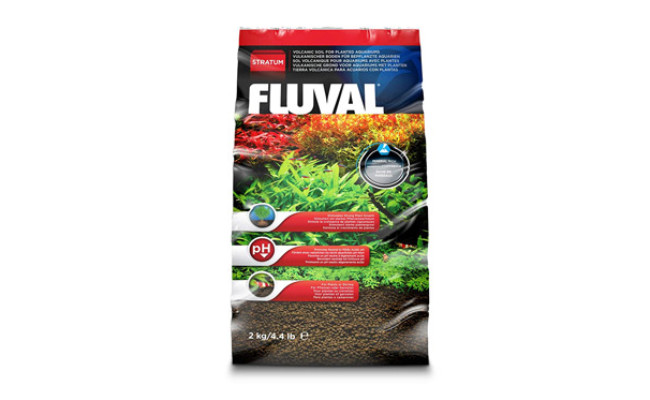
For more than 35 years, Fluval have kept up their reputation in manufacturing high-quality aquatic products. This particular substrate meant for healthy growth of plant life and shrimps is one of their highly appreciated products on the market – for god reason!
This fish tank substrate is made out of the rich soil from the foothills of Mount Aso Volcano located in Japan. As a result, it contains all the essential minerals including macro and micronutrients. This aquarium soil is ideal for freshwater aquariums since it exhibits slightly acidic properties. For the same reason, it can be incredibly helpful for tropical aquatic lives or shrimp which can use it as a place to hide from predators until they grow big enough to emerge.
When it comes to plants, the substrate promotes strong plant growth since the roots can easily procure all embedded nutrients by penetration. Besides, its light porous structure will allow beneficial nitrifying bacteria groups to colonize improving the water quality for plants. Also, it does not discolor water; instead, it helps to keep organic discoloration resulting from natural driftwood in control.
Rich volcanic soil
Promotes plant growth
Provides newborn shrimp refuge
Neutral to mildly acidic
Controls discoloration
For freshwater use
- Brand: Fluval
- Model: 12693
- Weight: 4.4 lbs
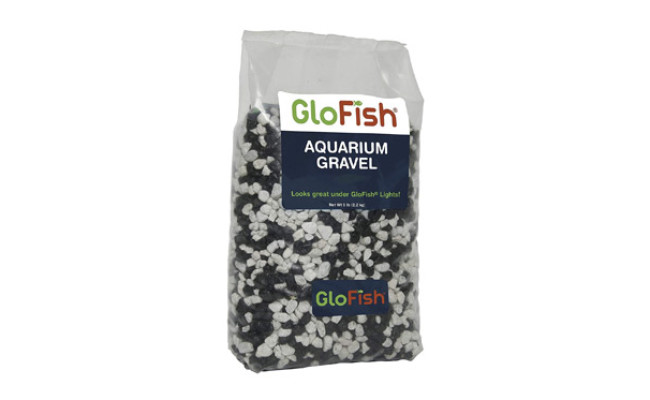
The renowned patented brand of GloFish specializes in genetic technology which transforms ordinary fish into fluorescent ones! That is why their fish tank gravel comes in six stunning vibrant colors that can glow in the dark if you want!
The substrate comes in black and white color, where black is true, deep and solid, and white is fluorescent. The combination will make any aquarium and its inhabitants glow and stand out under the blue lighting!
Importantly, the company uses a proprietary formula to support such technology without harming the health of any inhabitant of your aquarium. It is available only in packs of five pounds though, but thankfully, you don’t have to use it as a substrate if you don’t want to; it works just fine as accent too.
Deep black and fluorescent white color
Stands out under blue lighting
Proprietary formula
Safe for all plants and fish
- Brand: GloFish
- Model: 29087
- Weight: 5 lbs
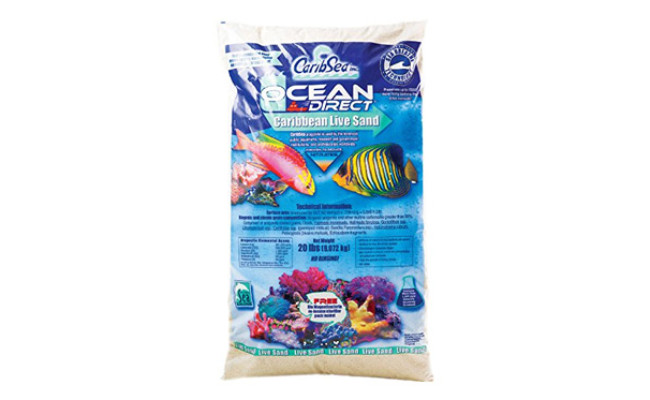
Another excellent substrate by CaribSea, this time one of their Ocean Direct products which incorporate the unique sea breathe technology. Fun fact: this brand was the first one to come up with this idea which preserves real sand and its original bacteria!
Unlike most other substrates, this one brings all-natural elements into your well-nourished aquarium. That is evident in each Ocean Direct packet containing bacteria which are up to 100 times more beneficial compared to other preservation methods. Each grain in this packet is encapsulated by capillary action and coated by a thin film of actual ocean water. This thin film ensures an unparalleled level of gas exchange with the atmosphere, eliminating any chance of accumulating metabolic byproducts.
It is available in two variations named original grade and polite, where the original one offers a density of 96 pounds per cubic foot and oolite allows 87 pounds per cubic foot density. Whichever one you choose, there’s no doubt this is a wonderful substrate for your planted tank!
Sea breathe technology
Original bacteria preserved
Unparalleled gas exchange
Comes with a thin film of real ocean water
- Brand: Carib Sea
- Model: 008479009401
- Weight: 4.3 lbs
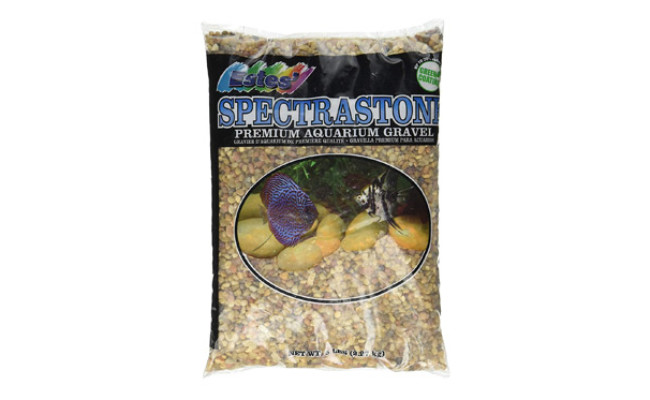
This regular substrate for planted fish tanks developed by Spectrastone is one of the most affordable options on the market. It is ideal for freshwater aquariums although it will not affect the pH of water.
This substrate consists of gravels of varying sizes which range from about 5mm to some larger pieces close to 10mm. They do not have any artificial color on them and look pretty natural. So if you are on a budget and are looking for a simple solution to your planted aquarium, this substrate may just be the one to go for.
Even though it is meant for aquarium use only, this substrate can also be spread out around the roots of succulent plants. Along with elevating their aesthetic value, the gravels can also promote better growth for these plants.
Does not affect pH level
Non-toxic coating
For freshwater
Can be used for succulent plants
- Brand: Spectrastone
- Model: 5 lbs
- Weight: 11509
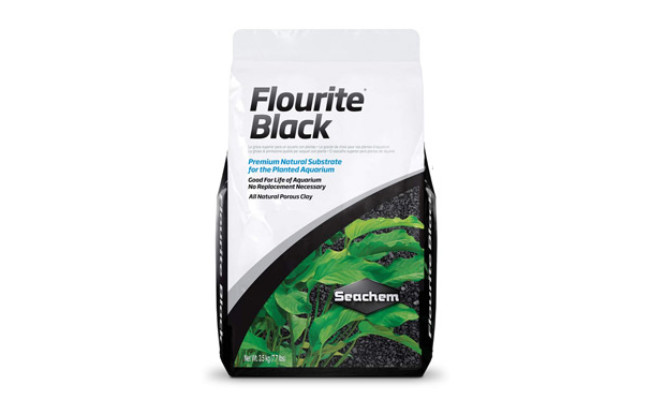
Make way for another Seachem product which mainly consists of sand and gravel. This Fluorite edition consists of carefully fracted and stable clay gravels that have a porous structure, making it an ideal substrate for your planted tank.
It works best when used alone as a single integral bed inside the aquarium. Although, if you are craving some more aesthetic mix-and-match, feel free to throw in some gravels from another category! Any modifier or enhancer like laterite is not required for Fluorite to function properly.
This substrate will not alter the water’s pH so theoretically, it is safe to use in both freshwater and saltwater. Even though it comes pre-washed, it is better to rinse the gravels before use to remove any dust formed during transit. If you settle for the smaller sized Fluorite Black bag weighing at 3.5kg, you can rinse the substance in the bag with its specialized mesh bottom.
Porous clay gravel
Specially fracted
Does not need laterite
Not chemically coated
No pH alteration
- Brand: Seachem
- Model: 67137250
- Weight: 14.9 lbs
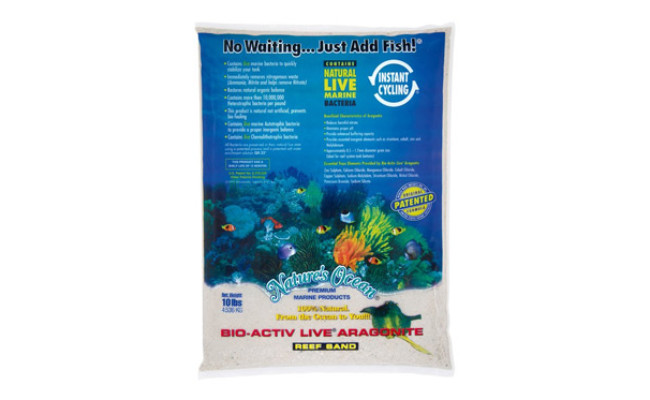
Nature’s Ocean have proved thier capability by providing premium aquarium products since 1979. Keeping up the legacy, this high-quality live sand developed by them also offers a number of premium features. Its grains are pretty compact in size measuring just 0.1mm to 0.5mm.
The live Aragonite sand is obtained from nature and its natural goodness is preserved even in the packaged state. It can eliminate all nitrogenous waste including ammonia and nitrite as soon as it enters the system. Using this will also guarantee instant ammonia cycling and enhance the buffering capacity. The proper level of pH is maintained by its regular use.
All you have to do is put it in the aquarium box, add saltwater and introduce your aquatic creatures! So bear in mind that this sand can be used anywhere in the saltwater aquarium except under gravel filters.
Removes nitrogenous waste
Instant ammonia cycling
Balances pH properly
Enhances buffering capacity
- Brand: Nature’s Ocean
- Model: 20731
- Weight: 10 lbs
Best Aquarium Substrate Buying Guide
Things to Consider When Buying Aquarium Substrate
To get the best substrate for your planted aquarium, it’s important to consider a few things first.
- Type of aquarium inhabitants
Firstly, you need to ask yourself, “Who are the inhabitants of your aquarium abode?” If it contains plants, you should choose a substrate that provides the essential nutrients for their healthy growth. It is recommended to include those nutrients inside the gravels instead of the water column since roots are the main medium for plants to obtain those minerals. The substrate of a planted aquarium should have two layers – a lower one full of nutrition and an upper one of regular gravel or sand to prevent wash-out.
If the aquarium is full of fish only, the substrate must allow the colonization of beneficial bacteria. The substrate layer should be shallow enough to prevent the food particles from sinking into a less oxygenated area since that can eventually result in toxic hydrogen sulfate. For marine and reef aquariums, you should introduce enough calcium and magnesium to raise the pH level high enough.
- Type of water
There are different substrates available for different kinds of ecosystems. The one made for freshwater environments cannot be used in saltwater environments. So check through the information on the type of substrate you selected to determine what kind of water it is made for.
- Required amount
The right amount of substrate to put into your planted aquarium depends on its capacity or volume. For example, if a fish tank has 55 gallons capacity, its gravel layers should be about 2 inches deep. If there are plants involved too, a nutrient-rich layer of 1 inch can be added underneath the gravel layer. For bigger aquariums, the gravel layer can grow up to 3 inches.
- Particle size
Gravels and other particles of substrates are mainly available in two sizes – fine and large. The finer gravel is meant to bring in the natural aesthetics to your planted aquarium and imitate the natural habitat for the fish. Larger gravels, on the other hand, are found in a wider variety of colors, giving you the option of playing more with the decoration. Some of them even glow in the dark making the whole setup much more fun than usual.
Larger gravel substrates will need more frequent cleaning since the unconsumed fish food deposited in their large gaps can turn toxic after a while. The finer gravels, on the other hand, need to be loosened up more often because they tend to compress together creating tank areas with a trivial amount of oxygen.
- Color
When it comes to colors, you can choose among many but make sure none of them has actual paint colors on them. The paints can be nibbled on by the fish and cause it pain. If you want to take the safest road, choose the natural looking gravels which are the most comfortable for fish.
- Quality
The gravel quality should be smooth enough and without any sharp edges which can hurt the fish. So before settling on a substrate, it’s a good idea to run your hands on its sample and figure out if they feel smooth enough or not.
- Water reactivity
The number of required pH level in a tank varies depending on its residents. Certain fish species like African cichlids would require a higher pH than usual. So fish tanks with this type of aquatic creatures will need a substrate that buffers water like crushed coral. In contrast, species like angelfish need a lower pH and thus substrate like peat moss is used in the system.
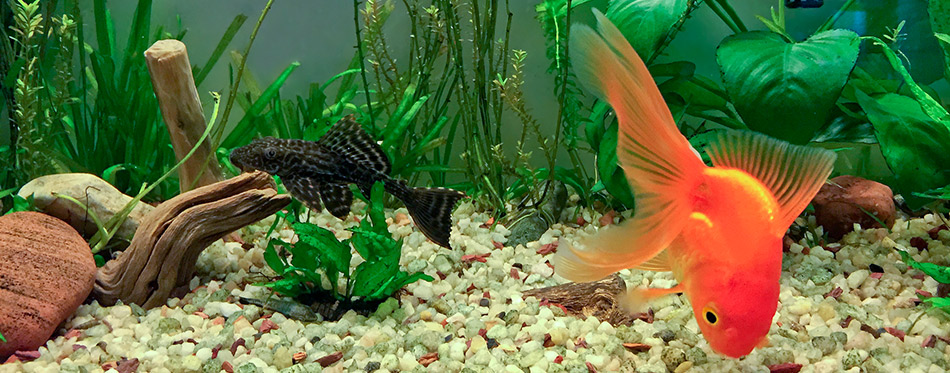
Benefits of Substrate in Aquarium
- Plant growth
Most of the substrates are rich in nutrients which are beneficial for aquarium plants. They also improve the overall environment of the tank and make your fish happier.
- Stable position
It is hard for plants to hold onto the glass surface of the aquarium. A planted aquarium, on the other hand, provides them with a better and more stable platform to stand on.
- Pollution prevention
Substrate prevents pollution by keeping the fish waste and food waste at the bottom instead of floating around in the water.
- Fish comfort
A glass surface doesn’t feel particularly familiar or natural to the fish. But a substrate layer that mimics the natural habitat? Absolutely! A nice natural substrate will significantly raise their comfort and happiness level.
Types of Aquarium Substrate
- Sand
Sand is the best substrate for a beginner since all fish love to dig and bury it. This makes cleaning much easier since dirt particles land on its top instead of getting lost in the grains.
- Gravel
Aquarium gravel has smooth edges and thus make a comfortable substrate for fish lives. They come in varying size and colors to customize the tank’s appearance.
- Crushed Coral and Aragonite
They both raise pH in the aquarium and can bring the saltwater vibes to a freshwater environment. Crushed coral needs frequent vacuuming though since its light color cannot hide dirt and debris very well.
- Others
The planted aquariums may utilize Fluorite, Laterite, EcoComplete, Aquasoil and similar substrates for nutrition and nourishment.
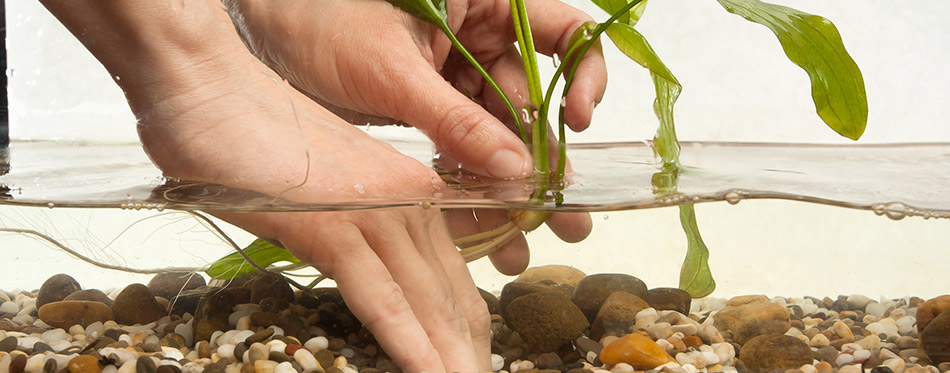
Best Aquarium Substrate FAQ:
Q: What is aquarium substrate?
A: A tank substrate is simply the substance placed at the bottom of an aquarium for both aesthetic and functional purposes. It has the power to influence the filtration, water chemistry, and health of inhabitants. A substrate can also affect the comfort level of aquatic creatures living in the tank by its color and texture.
Q: How much substrate should I use for my aquarium?
A: Typically, about 1 pound of the substrate is needed per gallon if you wish to form a one-inch bed in the rectangular aquarium. Also, 5 pounds of gravel, 6 pounds of dry sand and 8 pounds of wet sand are an ideal combination to form a one-inch substrate bed inside a 10×10 inches tank.
Q: How to set up substrate for a planted aquarium?
A: To set up a substrate for your planted aquarium, follow these simple steps. Firstly, lay down a strong sustainable foundation with a mineral-rich substrate after rinsing it. Then install a filter and an aquarium heater after filling up the tank with dechlorinated water. If you wish to adjust the pH level, use a water conditioner. Add a plant lamp for better growth of the aquatic vegetation. Keep it this way for 2 to 3 weeks, and then, introduce your aquarium plants and fish and enjoy!
Q: How should I clean my substrate before I add it to my tank?
A: To prevent the tank water from getting cloudy, wash the dusty gravels or sand thoroughly. Put a small amount of the substrate in a clean bucket and spray water through a hose. Don’t forget to pour out the dirty water every time you are done washing a batch.
Q: How can I keep my substrate clean?
A: First of all, unplug all electrical components included like heater, filter, and pump. However, there is no need to displace the fish, plants and other decorations of the tank. Pick your cleaning tool of choice – a thick aquarium siphon for larger tanks or a plastic flexible tube for smaller ones. Put a bucket below the tank to hold in the old water. Submerge one end of the vacuum inside the aquarium while placing the other end in the bucket. Use your thumb to stop the water flow whenever necessary. After getting rid of all the dirty water, read the tank’s temperature and make sure the new water matches this temperature to not alert the fish.
Q: How often should I change aquarium substrate?
A: Substrates which increase the pH level in water should be changed every few months to a couple of years. Clay substrates like Aquasoil need to be changed every 3 to 4 years. Gravels and sand, on the other hand, don’t need to be changed since they are almost neutral. As for the plant-based substrates, they will need frequent changes to ensure proper nutrition and nourishment.
Q: How deep should my silver sand be?
A: If your tank has live plants, the depth of silver sand should be from 1 inch to 1.5 inches. If there are no live plants, it can go below 1 inch. A layer deeper than 2 inches can cause a build-up of toxic anaerobic bacteria.
Q: Can I use a mixture of grain sizes?
A: A mixture of different sized grains can definitely be used if you want a natural or colorful look in your planted aquarium.
Our Top Pick
While all substrates on our top list are undoubtedly excellent products, the CaribSea Eco-Complete Substrate is, in our humble opinion, the best one out there. This freshwater black substrate has a highly porous structure and is rich in both major and minor essential elements. It encourages strong plant growth by providing them with nutrients through roots and also converts fish waste faster into plant food using the heterotrophic bacteria. All in all, a fantastic substrate for your planted tank!
Source:
Related Posts
